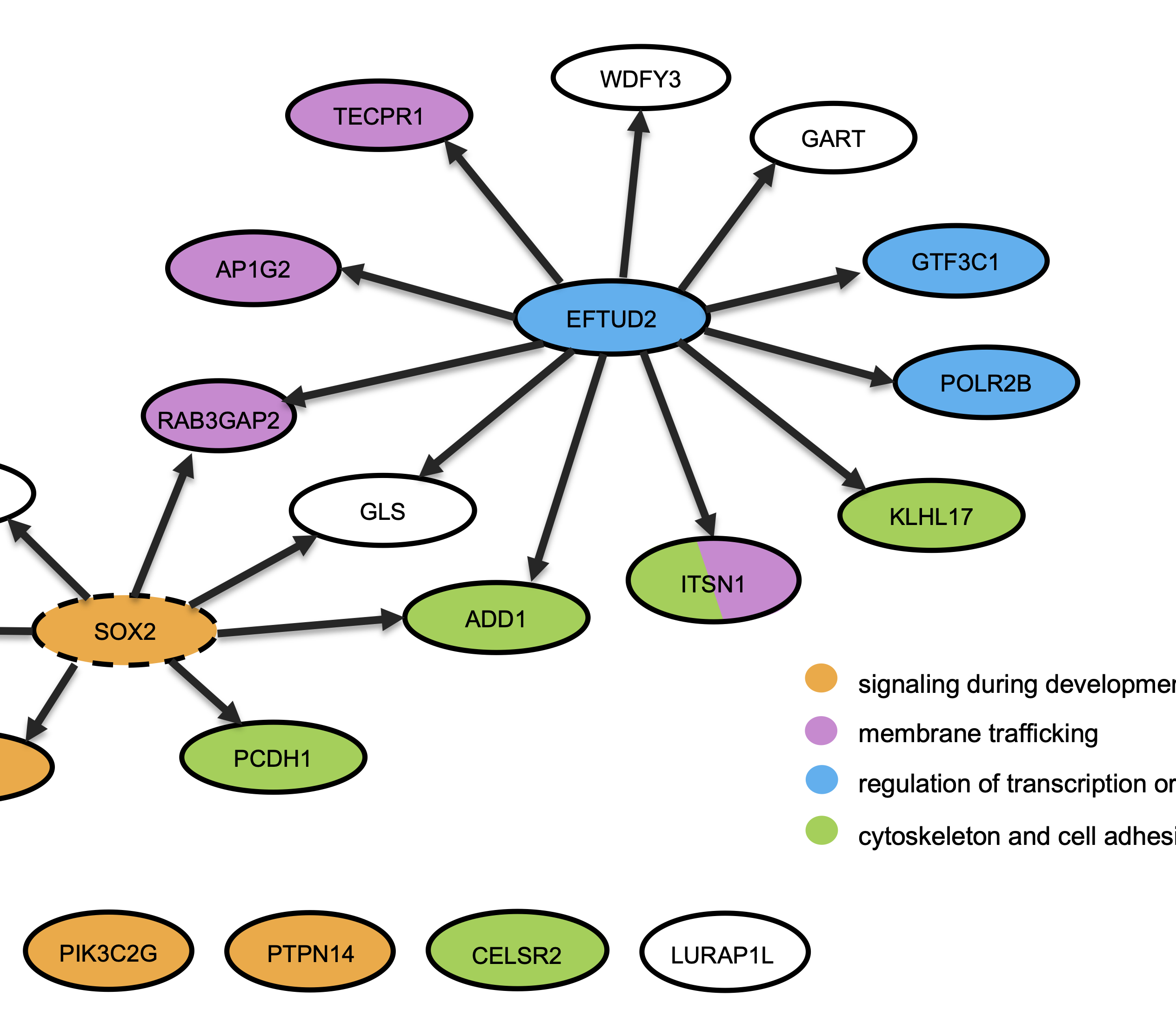Abstract
The various malformations of the aerodigestive tract collectively known as esophageal atresia/tracheoesophageal fistula (EA/TEF) constitute a rare group of birth defects of largely unknown etiology. Previous studies have identified a small number of rare genetic variants causing syndromes associated with EA/TEF. We performed a pilot exome sequencing study of 45 unrelated simplex trios (probands and parents) with EA/TEF. Thirteen had isolated and thirty-two had non-isolated EA/TEF; none had a family history of EA/TEF. We identified de novo variants in protein-coding regions, including 19 missense variants predicted to be deleterious (D-mis) and 3 likely-gene-disrupting variants (LGD). Consistent with previous studies of structural birth defects, there is a trend of increased burden of de novo D-mis in cases (1.57 fold increase over the background mutation rate), and the burden is greater in constrained genes (2.55 fold, p=0.003). There is a frameshift de novo variant in EFTUD2, a known EA/TEF risk gene involved in mRNA splicing. Strikingly, 15 out of 19 de novo D-mis variants are located in genes that are putative target genes of EFTUD2 or SOX2 (another known EA/TEF gene), much greater than expected by chance (3.34 fold, p-value=7.20e-5). We estimated that 33% of patients can be attributed to de novo deleterious variants in known and novel genes. We identified APC2, AMER3, PCDH1, GTF3C1, POLR2B, RAB3GAP2, and ITSN1 as plausible candidate genes in the etiology of EA/TEF. We conclude that further genomic analysis to identify de novo variants will likely identify previously undescribed genetic causes of EA/TEF.
